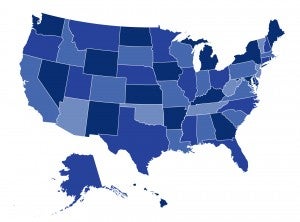States Step Up to Protect Consumers in Wake of Cuts to ACA Cost-Sharing Reduction Payments

In the wake of President Trump’s decision to cut off payments for a key ACA subsidy for low-income enrollees, the impact felt by consumers and insurers will vary from state to state, depending on the actions of insurance regulators and insurance companies. In their latest post for The Commonwealth Fund’s To The Point blog, CHIR’s Sabrina Corlette, Kevin Lucia, and Maanasa Kona share findings from their 50-state review of insurers’ responses to the loss of cost-sharing reduction payments for 2018.


